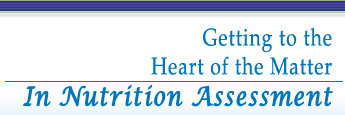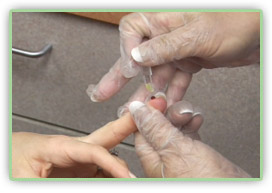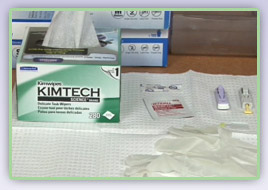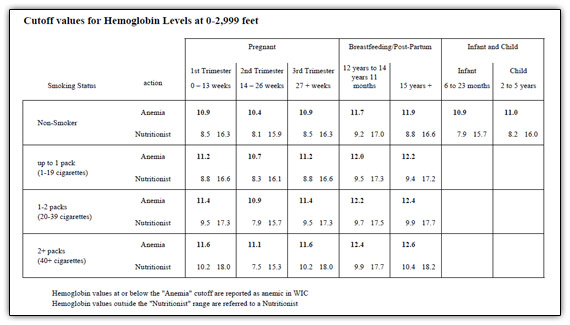
Module 3: Biochemical - Blood Test HGB: 200's
Continuing down the Road, the Cowardly Lion jumps out and attempts to scare you, donít back down this is just another opportunity to gather the information. What would the information you collect here tell you?
Have On HAND
Workbook Pages 25-28ABCDE Assessment Tool
Lab Manual
Nutrition Risk Manual
Module Summary
A pregnant woman's biochemistry is crucial in fetal development. WIC tests hemoglobin in order to assess oxygenated blood and iron stores (anemia) and other medical conditions which may require follow-up by the medical provider. Although these tests are not for diagnostic purposes, they aid in WIC's purpose by delivering information and helping determine the correct WIC food package for a client. This Module discusses anemia and when to test mothers and children, and provides guidelines on hemoglobin iron levels.
Module Goals
- To identify how Biochemical results will affect nutritional needs
- Use open-ended questions to gather information and identify appropriate WIC codes (200ís)
- To make appropriate referrals when necessary
Module Highlights
Iron Deficiency Anemia:
Iron is needed in the blood to produce hemoglobin which is what carries oxygen in the red blood cells. Having enough iron in the blood ensures that there is proper brain and body development, tissue function, immune system strength and energy levels. When the blood does not have adequate oxygen, the heart and lungs must work harder because of the low oxygen levels.Lead:
Lead is more common in children than adults and often times a provider will test patients between 1 and 2 years.Why Check Hemoglobin?
The blood test we perform at WIC can be an indicator of iron deficiency anemia which is low iron stores, or possibly an indicator of other medical conditions that would need to be followed by the medical provider. We are not testing to diagnose anemia, but to aide in delivering information on iron rich foods.When to Check:
- Pregnant certification
- Breastfeeding/Post partum certification (after 4 weeks postpartum)
- Infant certification if the new infant begin certified is between 9 and 12 months old
- Twice before the age of 2 years (generally at the 1 year certification and at the 18 month certification)
- Children after 2 once per year if normal values
- If they have had a low reading at the previous certification.
How:
With a finger or heel poke, and knowing the values and what codes are associated with it.Elevation can be a factor:
Now it is time for you to view a video and then practice with the activities. Please first watch the video near the top of the screen on the right, then you will be able work on the activities located in the purple box on the right side. When you have completed watching the video and your activities check-in with your Helping HAND before continuing.




